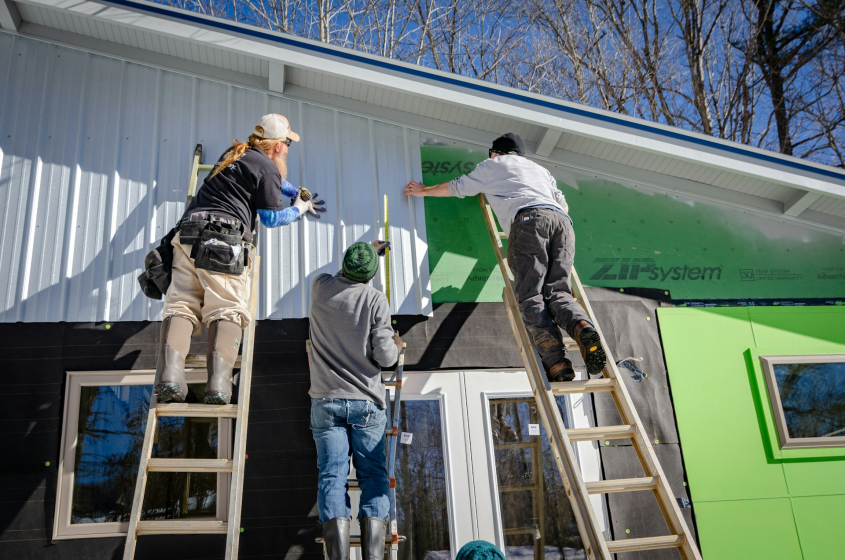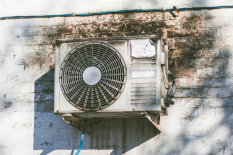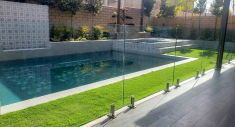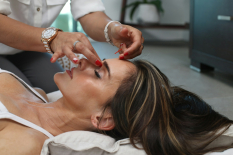Understanding Metal Roofs
Metal roofs have gained popularity in the world of roofing due to their durability, longevity, and aesthetic appeal. Understanding the advantages of metal roofs and the common types of metal roofing materials available can help you make an informed decision for your home.
The Advantages of Metal Roofs
Metal roofs offer numerous benefits that make them an attractive option for homeowners. Some key advantages of metal roofs include:
- Durability: Metal roofs are known for their exceptional durability. They can withstand extreme weather conditions, including heavy rain, strong winds, and hail. Metal roofs are also resistant to fire, rot, and insect damage, making them a long-lasting choice.
- Longevity: Metal roofs have an impressive lifespan, often lasting 50 years or more with proper care. This longevity surpasses many other roofing materials, such as asphalt shingles, which typically have a lifespan of 20-30 years.
- Energy Efficiency: Metal roofs are highly reflective, which helps to reduce heat absorption and keep your home cooler. This reflective property can lead to energy savings by reducing the need for excessive air conditioning during hot summer months.
- Low Maintenance: Unlike some other roofing materials, metal roofs require minimal maintenance. They are resistant to mold, mildew, and rot, and they do not require frequent repairs or replacement.
- Environmentally Friendly: Metal roofs are considered an environmentally friendly choice. They are often made from recycled materials and are 100% recyclable at the end of their lifespan. Additionally, their long lifespan reduces the need for frequent replacements, minimizing waste.
Common Types of Metal Roofing Materials
There are several types of metal roofing materials available, each with its own unique characteristics. Some common types of metal roofing materials include:
| Metal Roofing Material | Description |
|---|---|
| Steel | Steel is a popular choice for metal roofs due to its strength and affordability. It is available in various gauges and can be coated for enhanced protection against corrosion. |
| Aluminum | Aluminum is known for its lightweight nature and resistance to rust and corrosion. It is an excellent choice for coastal areas or regions with high humidity. |
| Copper | Copper is a premium metal roofing material known for its elegance and distinctive appearance. It develops a beautiful patina over time, giving your roof a unique character. Copper roofs are highly durable and can last for centuries with proper maintenance. |
| Zinc | Zinc is a versatile and long-lasting metal roofing material. It is resistant to corrosion and requires minimal maintenance. Over time, zinc develops a protective layer called patina, which enhances its durability. |
| Galvalume | Galvalume is a steel substrate coated with a combination of aluminum, zinc, and silicon. This coating provides enhanced corrosion resistance and durability. Galvalume roofs are known for their excellent performance in harsh climates. |
Understanding the advantages and differences between these metal roofing materials can help you select the one that best suits your needs and preferences. Whether you prioritize affordability, durability, or aesthetics, there is a metal roofing material that can meet your requirements.
By embracing the advantages of metal roofs and exploring the various types of metal roofing materials, you can make an informed decision when it comes to protecting and enhancing the beauty of your home. Regular maintenance and care are essential to ensuring the longevity and performance of your metal roof. Stay tuned for our upcoming articles on metal roof maintenance and roof inspection tips to learn more about caring for your metal roof.
Importance of Roof Care
Taking care of your metal roof is essential for maintaining its longevity and protecting your home. Regular roof maintenance not only ensures that your roof functions properly but also helps to prevent costly repairs down the line. In this section, we will explore the importance of roof care, including the benefits of regular roof maintenance and the signs of roof damage to watch out for.
Benefits of Regular Roof Maintenance
Regular roof maintenance offers a myriad of benefits, making it a crucial aspect of home maintenance. Here are some key advantages of maintaining your metal roof:
- Prolongs Roof Lifespan: Regular maintenance helps to extend the lifespan of your metal roof. By addressing minor issues early on, you can prevent them from escalating into major problems that could require extensive repairs or even roof replacement.
- Protects Against Weather Elements: Metal roofs are designed to withstand various weather conditions, but they can still be susceptible to damage over time. Regular maintenance helps to identify and rectify any damage caused by wind, rain, hail, or snow, ensuring that your roof remains durable and weather-resistant.
- Preserves Energy Efficiency: A well-maintained metal roof contributes to energy efficiency in your home. Proper insulation, sealing, and ventilation help to regulate indoor temperature, reducing the need for excessive heating or cooling. This can result in energy savings and lower utility bills.
- Prevents Leaks and Water Damage: Regular inspections and maintenance allow you to identify and fix potential sources of leaks before they cause significant water damage to your home’s interior. By addressing issues promptly, you can prevent mold growth, structural damage, and other costly repairs.
Signs of Roof Damage
It’s important to be vigilant and keep an eye out for any signs of roof damage. Catching these signs early can help you address the issues before they worsen. Here are some common signs of roof damage to watch for:
- Loose or missing roof panels
- Corrosion or rust spots
- Cracked or damaged sealant
- Leaks or water stains on the ceiling
- Sagging or uneven roof surface
- Excessive granule loss on shingles (if applicable)
- Dents or indentations on metal panels
- Damaged or displaced flashing
- Accumulation of debris or vegetation
If you notice any of these signs, it’s essential to take immediate action by contacting a professional roofing contractor. They can assess the extent of the damage and recommend the necessary repairs or maintenance steps to rectify the issues.
Regular roof maintenance and prompt repairs are key to ensuring the longevity and performance of your metal roof. By investing time and effort into caring for your roof, you can protect your home and enjoy the benefits of a well-maintained, durable roof for years to come.
Cleaning and Maintenance
To ensure the longevity and performance of your metal roof, regular cleaning and maintenance are essential. Proper care not only enhances the appearance of your roof but also helps to prevent potential damage. In this section, we will discuss effective cleaning techniques for metal roofs, removing debris and leaves, and inspecting and repairing roof flashing.
Cleaning Techniques for Metal Roofs
Cleaning a metal roof requires gentle yet effective techniques to remove dirt, debris, and other buildup without causing any damage. Here are some recommended cleaning methods:
- Soft Washing: Soft washing involves using a low-pressure water spray combined with a mild detergent to clean the metal roof. This technique is effective in removing dirt, algae, and mildew without the need for high-pressure water that could potentially damage the roof’s surface.
- Hand Cleaning: For localized stains or areas that require extra attention, hand cleaning with a soft-bristle brush or sponge can be effective. Use a mild detergent mixed with water to gently scrub the affected areas. Avoid using abrasive materials or harsh chemicals as they can scratch or corrode the metal surface.
- Avoid Pressure Washing: While pressure washing may seem like a quick solution, it can be damaging to metal roofs. High-pressure water can strip away protective coatings, bend or dent the metal panels, and force water into areas where it shouldn’t go. It’s best to avoid pressure washing unless recommended by the manufacturer or a professional.
Removing Debris and Leaves
Regularly removing debris and leaves from your metal roof is crucial to prevent moisture buildup, clogged gutters, and potential damage. Here are some steps to effectively remove debris:
- Use a Broom or Brush: Start by using a broom or brush with soft bristles to gently sweep away loose debris from the roof surface. Be careful not to apply excessive pressure that could scratch or damage the metal.
- Clear the Gutters: Clear out any leaves, twigs, or other debris that may have accumulated in the gutters and downspouts. Clogged gutters can lead to water backup and potential roof leaks.
- Consider Gutter Guards: Installing gutter guards can help prevent debris from entering the gutter system, reducing the frequency of cleanings. Ensure the gutter guards are compatible with your specific gutter type and follow the manufacturer’s installation instructions.
Inspecting and Repairing Roof Flashing
Roof flashing plays a crucial role in preventing water penetration at vulnerable areas, such as chimneys, skylights, and roof valleys. Regular inspection and maintenance of roof flashing are necessary to ensure its effectiveness. Here’s what you should do:
- Inspect for Damage: Periodically inspect the roof flashing for signs of damage, such as cracks, gaps, or deterioration. Pay close attention to areas where the flashing meets the roof surface and other structures. If you notice any issues, prompt repairs are necessary to prevent water infiltration.
- Repair or Replace: If you identify damaged or deteriorated flashing, it’s important to repair or replace it promptly. Depending on the extent of the damage, you may be able to patch small cracks or gaps with a suitable sealant. For more significant damage, it’s best to consult a professional roofer to ensure proper repairs or replacement.
Regular cleaning and maintenance not only keep your metal roof looking its best but also help to extend its lifespan and prevent costly damage. Remember to follow safe practices and consult professionals when needed to ensure the proper care and maintenance of your metal roof.
Preventing Rust and Corrosion

Metal roofs are known for their durability, but they are not immune to rust and corrosion. To maintain the longevity and appearance of your metal roof, it’s important to take preventive measures. This section will explore two key techniques for preventing rust and addressing corrosion issues: applying protective coatings and addressing rust and corrosion issues promptly.
Applying Protective Coatings
One of the most effective ways to prevent rust and corrosion on a metal roof is by applying protective coatings. These coatings act as a barrier between the metal surface and the elements, providing an extra layer of protection.
There are various types of protective coatings available for metal roofs, including epoxy coatings, acrylic coatings, and polyurethane coatings. These coatings not only shield the metal from moisture and UV rays but also enhance the overall aesthetics of the roof.
Before applying any protective coating, it’s crucial to thoroughly clean the roof surface. This will ensure proper adhesion and maximize the effectiveness of the coating. Additionally, it’s important to choose a coating that is compatible with the specific type of metal used in your roof. Consult with a professional or refer to the manufacturer’s recommendations to select the most suitable coating for your metal roof.
Addressing Rust and Corrosion Issues
Despite preventive measures, rust and corrosion can still occur on a metal roof. It’s essential to address these issues promptly to prevent further damage.
If you notice any signs of rust or corrosion, start by cleaning the affected area with a gentle detergent and a soft brush. Rinse thoroughly and allow the surface to dry completely. Once dry, you can apply a rust converter, which chemically converts the rust into a stable compound, preventing it from spreading.
After treating the affected area, it’s important to assess the root cause of the rust or corrosion. Common causes include improper installation, damaged protective coatings, or prolonged exposure to moisture. Addressing the underlying cause is crucial to prevent future recurrence.
If the damage is extensive or you’re unsure about how to proceed, it’s recommended to consult a professional roofing contractor. They can assess the severity of the rust or corrosion and provide appropriate solutions to restore the roof’s integrity.
By applying protective coatings and promptly addressing rust and corrosion issues, you can significantly extend the lifespan of your metal roof. Regular inspection and maintenance are also essential to identify any potential issues early on. For more tips on maintaining and caring for your metal roof, refer to our article on metal roof care.
Remember, a well-maintained metal roof not only protects your home but also enhances its aesthetic appeal.
Extending Roof Lifespan
Taking steps to extend the lifespan of your metal roof is essential to ensure its longevity and performance. By implementing proper insulation, ventilation, and regular maintenance, you can protect your roof from potential damage and maximize its lifespan.
Insulating the Roof
Insulating your metal roof is a crucial step in maintaining its durability and energy efficiency. Proper insulation helps regulate temperature, preventing heat transfer during hot summers and retaining warmth during cold winters. This reduces the strain on your HVAC system and can lead to significant energy savings.
To insulate your metal roof, you have several options:
- Spray Foam Insulation: Spray foam insulation provides excellent thermal insulation and seals gaps and cracks, preventing air leakage. It adheres directly to the underside of the roof, creating a continuous layer of insulation.
- Reflective Foil Insulation: Reflective foil insulation is installed beneath the metal roof, reflecting radiant heat away from the interior of the building. This type of insulation is particularly effective in hot climates.
- Rigid Board Insulation: Rigid board insulation is a durable and moisture-resistant option. It is installed between the roof deck and the metal panels, providing excellent thermal insulation.
Consulting with a professional roofing contractor can help you determine the most suitable insulation option for your metal roof.
Proper Ventilation
Proper ventilation is critical for maintaining a healthy and long-lasting metal roof. Adequate ventilation helps regulate the temperature and moisture levels in the attic or roof space, preventing the buildup of excess heat, condensation, and moisture-related issues.
Here are some key aspects of proper roof ventilation:
- Ridge Vents: Ridge vents are installed at the peak of the roof, allowing hot air to escape from the attic. This creates a natural flow of air, preventing heat buildup and reducing the risk of damage to the metal roof.
- Soffit Vents: Soffit vents are located under the eaves of the roof, allowing cool air to enter the attic space. This balanced airflow helps maintain consistent temperature and moisture levels.
- Gable Vents: Gable vents are installed on the gable ends of the roof and promote cross-ventilation. They work in conjunction with other ventilation systems to ensure proper air circulation.
Proper ventilation can help prevent moisture-related issues such as mold, mildew, and rot, which can significantly impact the lifespan of your metal roof.
Regular Roof Inspections and Maintenance
Regular roof inspections and maintenance are crucial for identifying and addressing any potential issues before they become major problems. It is recommended to have your metal roof inspected at least once a year by a professional roofing contractor.
During inspections, the following aspects should be thoroughly examined:
- Roof flashing: Check for any damaged or deteriorated flashing around roof penetrations such as chimneys, vents, and skylights. Promptly repair or replace any compromised flashing to prevent water infiltration.
- Fasteners: Inspect the fasteners that secure the metal panels to ensure they are in good condition and properly tightened. Loose or damaged fasteners can compromise the integrity of the roof.
- Sealants: Check for any cracked or deteriorated sealants around the roof seams, edges, and penetrations. Reapply sealant as necessary to maintain a watertight seal.
- Gutters and downspouts: Regularly clean and inspect gutters and downspouts to prevent water backup and potential damage to the roof.
By conducting regular inspections and addressing any issues promptly, you can prolong the lifespan of your metal roof and avoid costly repairs in the future.
Remember, maintaining the integrity of your metal roof goes hand in hand with safeguarding your entire home. Explore our articles on installing a smart thermostat, installing roller shutters, or even retractable roof systems for additional ways to enhance your home’s energy efficiency and protection.
















